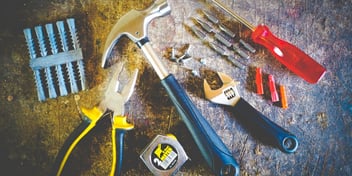3. Struck-By Accidents
Struck-by accidents occur when a falling object, vehicle, or equipment hits a worker. To avoid these accidents, workers should always wear personal protective equipment, including hard hats, safety glasses, and high-visibility clothing. Additionally, they should be aware of their surroundings and keep a safe distance from moving vehicles and equipment. Workers need to receive training on how to identify potential struck-by hazards and how to safely navigate work areas where there is a risk of objects or vehicles falling. By being alert and taking necessary precautions, workers can protect themselves from struck-by accidents and their potentially devastating consequences.
4. Caught-In Or Caught-Between Accidents
Caught-in or caught-between accidents occur when a worker is trapped or crushed between two objects. These accidents can happen in trenches, excavations, or confined spaces. To prevent these accidents, workers should follow proper excavation and trenching procedures, including shoring, sloping, or benching. Workers should never enter a confined space without proper training and equipment. Workers must receive thorough training on excavation and trenching safety, including properly securing trenches and excavations and identifying potential caught-in or caught-between hazards. By following these guidelines and being cautious when working in confined spaces, workers can significantly reduce the risk of caught-in or caught-between accidents.
5. Repetitive Motion Injuries
Repetitive motion injuries, such as carpal tunnel syndrome, are common in construction. These injuries can be caused by performing the same motion repeatedly, such as using a jackhammer or operating a power tool. Workers should take frequent breaks and stretch their muscles regularly to avoid these injuries. Additionally, workers should use ergonomic equipment and tools that reduce the strain on their bodies. Workers need to receive training on proper ergonomics and body mechanics, as well as how to identify early signs of repetitive motion injuries. By practicing good ergonomics and caring for their bodies, workers can minimize the risk of repetitive motion injuries and work comfortably and efficiently.
4. Rigging Hazards
In this regard, rigging is crucial to the safe movement of materials and equipment in a construction site. Any worker working on machine moving should apply proper equipment for rigging, such as slings, chains, or hoists, and ensure that it is in good condition. Proper fastening of the load and remaining clear with his communication regarding the rigging crew and crane operators are of prime importance to avoid an accident. Moreover, workers shall keep well clear of suspended loads, and be properly instructed and trained in rigging methods and safety practices. By following these steps, and maintaining a high level of situational awareness, a significant risk reduction can be made to the events around rigging incidents—making a much safer work environment for all concerned working at the construction site.
In conclusion, construction sites can be dangerous places, but workers can take steps to prevent accidents and injuries. Workers can stay safe on the job by following proper safety procedures, wearing personal protective equipment, and being aware of their surroundings. It's essential for workers to receive thorough training on construction safety and to be vigilant about potential hazards. By prioritizing safety and taking proactive measures, workers can create a safer and more productive work environment for everyone involved.



%20(1).webp?width=352&name=Blog%20Graphic%20(6)%20(1).webp)


Leave a Comment